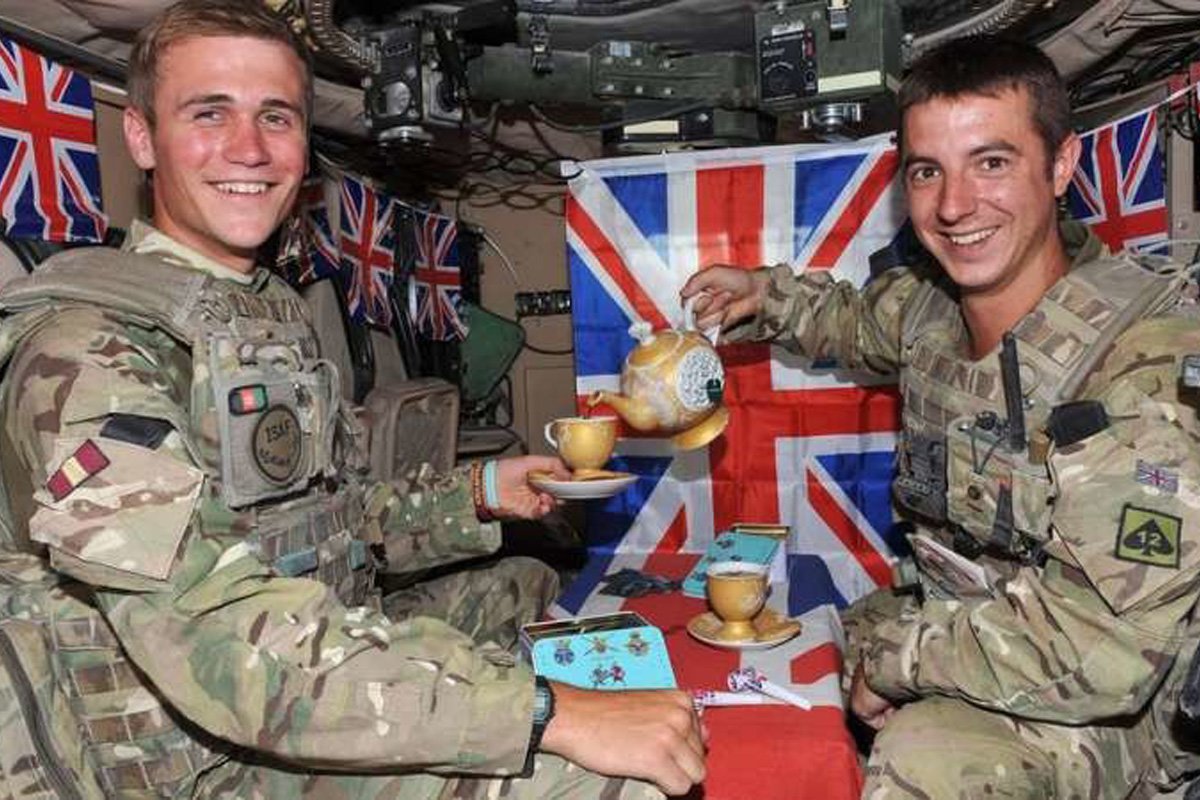
Bill Karavasilli, right, enjoying British tea in Afghanistan. Photo courtesy of LinkedIn.
It’s no secret that life inside a tank is dangerous, cramped, and stressful. During combat operations, tank crews sometimes spend days at a time inside their vehicles, unable to stretch their legs or enjoy refreshments. Shortly after World War II, the British Army designed special tea kettles to be installed inside its tanks to help alleviate some of the hardship. The quintessential British beverage boosted morale and even increased the survivability of tank crews.
In June of 1942, following a devastating defeat in the Libyan desert during the Battle of Gazala, morale in the British Army plummeted to a new low, and soldiers relied on hot tea to keep their spirits up. The troops typically used the so-called Benghazi burner — a tin fuel can, sometimes placed in a hole in the ground, filled with burning wood or sand-mixed petrol — to brew tea.
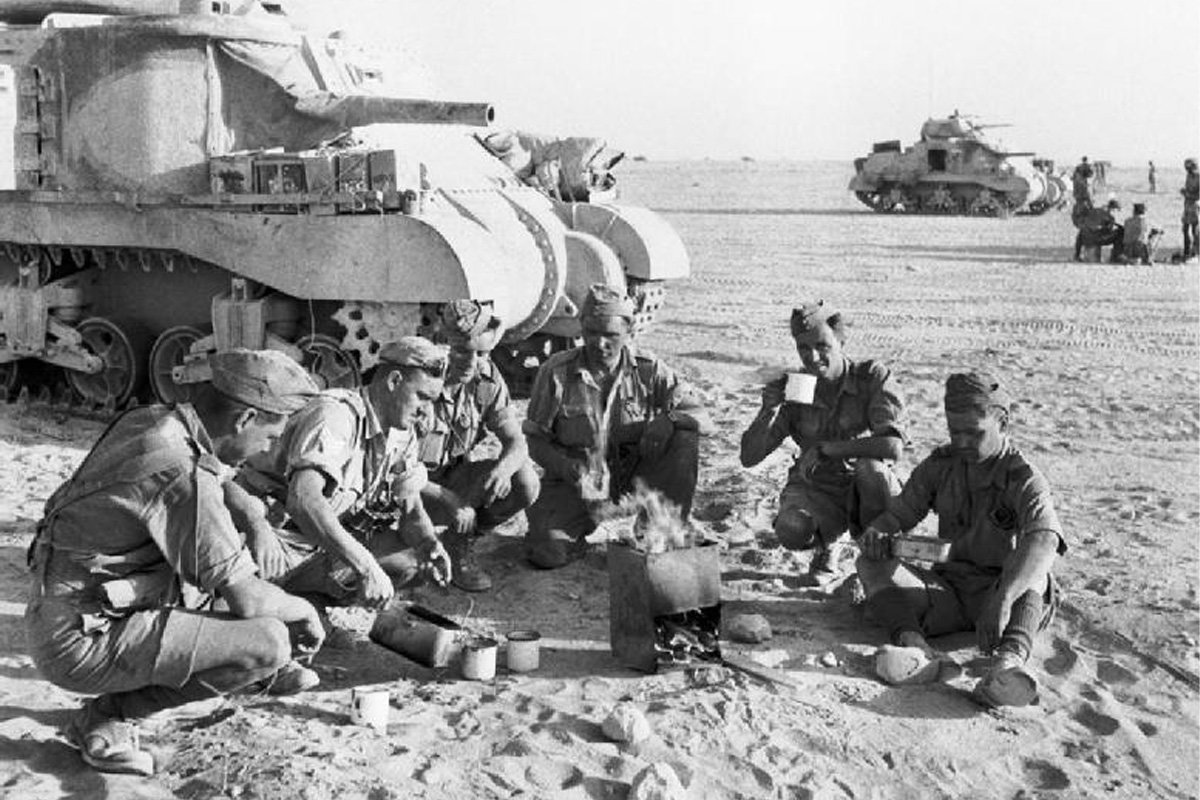
“I heard it said that, in that moment, had it not been for the tea ration coming through, we could have easily gone and thrown in the towel,” World War II military historian James Holland told The Tank Museum in 2020. “I mean, that is how important tea was to the British Tommy.”
In Europe, with combat spreading across the countryside to towns and even city streets, British tankers didn’t have the luxury of spotting their enemies from far off in remote desert terrain. Tank crews often dismounted from their armor for short tea parties nearby. This exposed armor formations to enemy attacks.
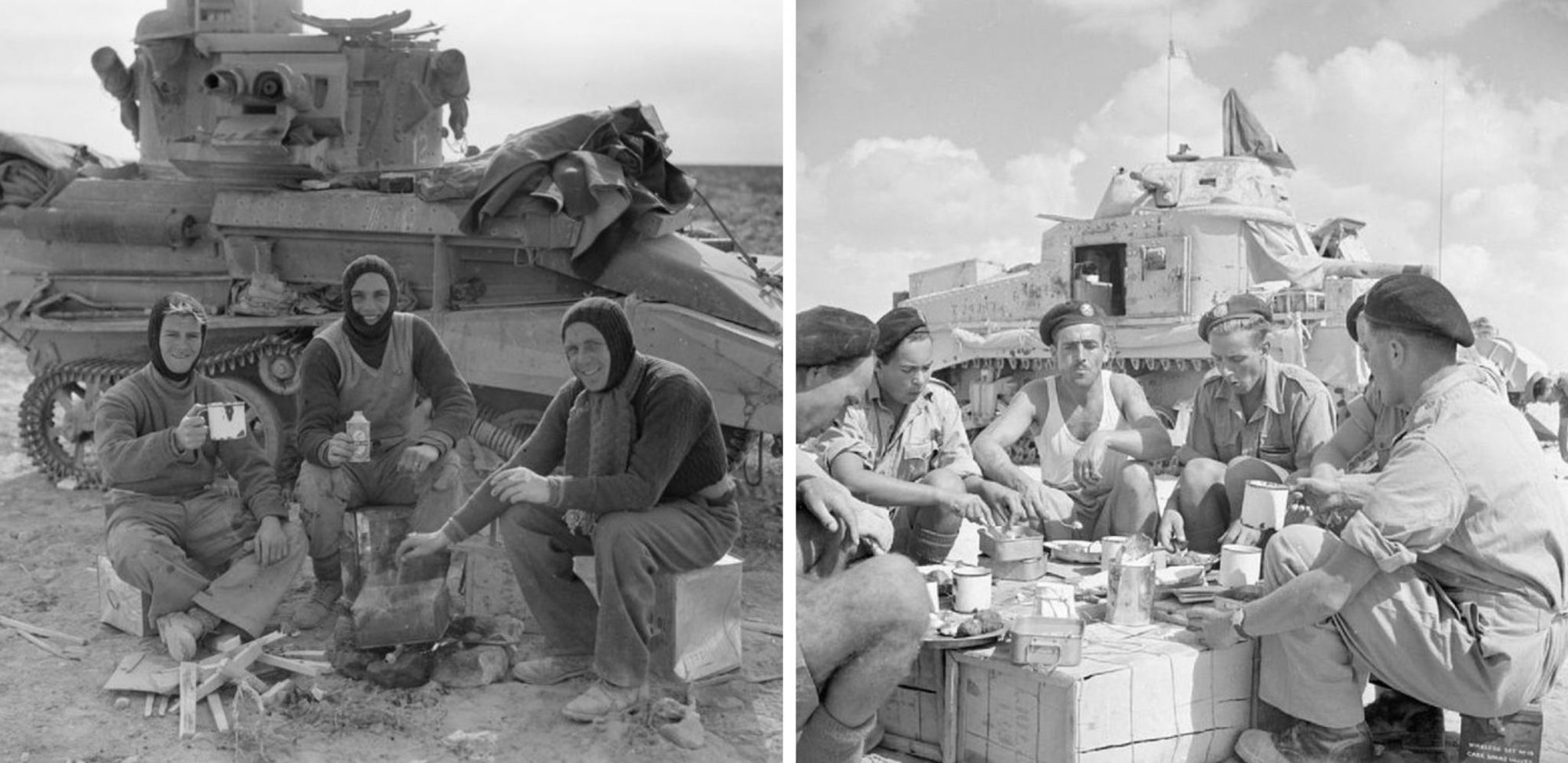
During the Battle of Normandy in 1944, Michael Wittmann, a German Tiger tank commander, knocked out 14 tanks in 15 minutes as British crews were outside their tanks on a tea break. Two years later, the British Medical Research Council published a survey of armored units in Northwest Europe that determined “37 percent of all armored regiment casualties from March 1945 until the end of the war some months later were crew members outside their vehicles.”
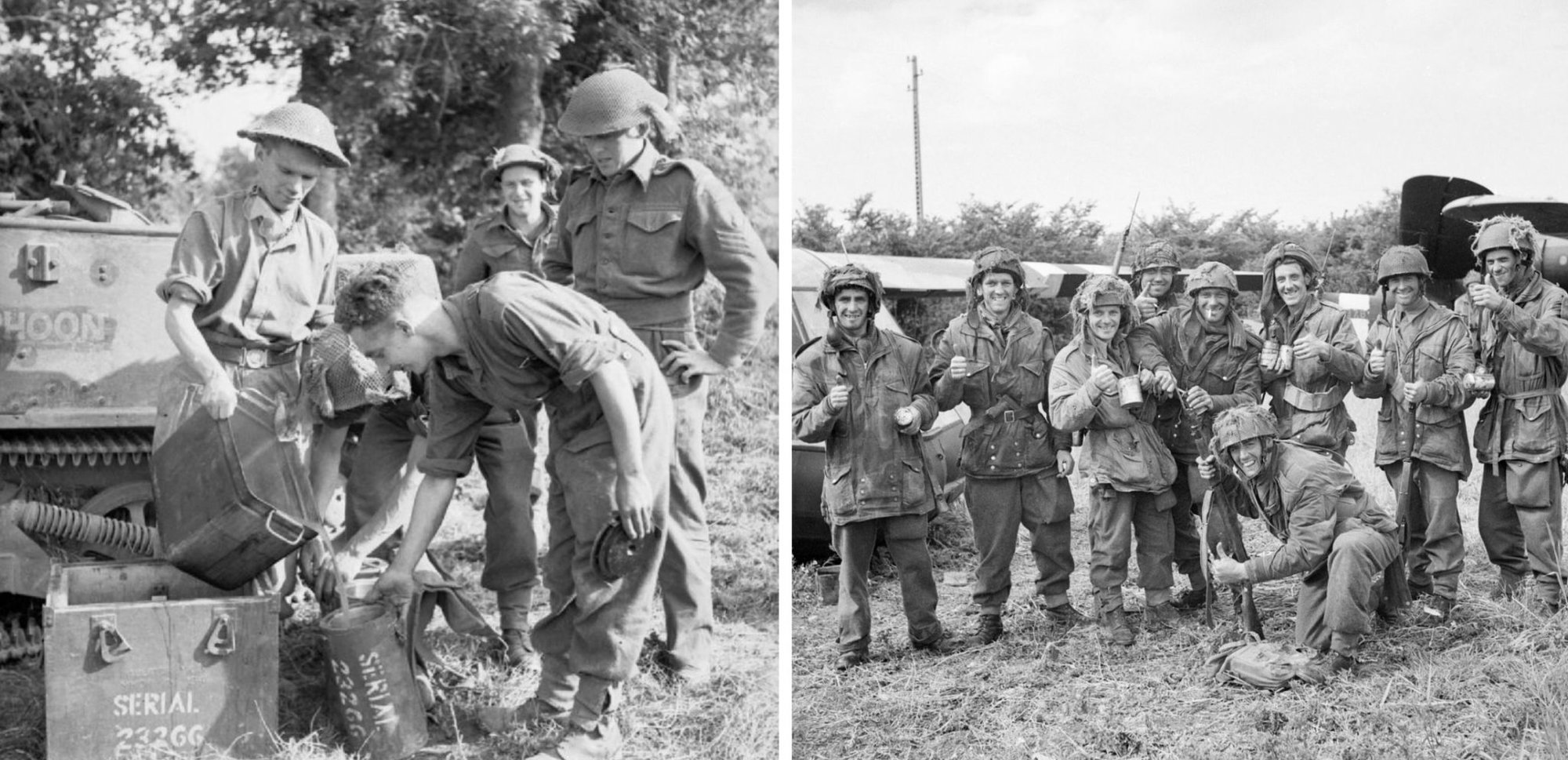
After the war, the British military came up with the solution: Install “boiling vessels,” or BVs, inside every Centurion tank. The BVs and British tank crews proved to be a match made in heaven.
Ask any tank crew, and all the crew members will say the single most crucial piece of equipment on the entire tank is the BV, because the tea kettle serves as a one-stop shop for boiling water, brewing tea, heating food packets, and other necessary comforts.
“You can never underestimate the importance of crew comfort in the turret,” Richard Cutland, a veteran of the British Royal Tank Regiment, told The Tank Museum. “We used to spend, sometimes, days inside this turret — so to have that ability there to run the BV to get your hot water was fantastic.”
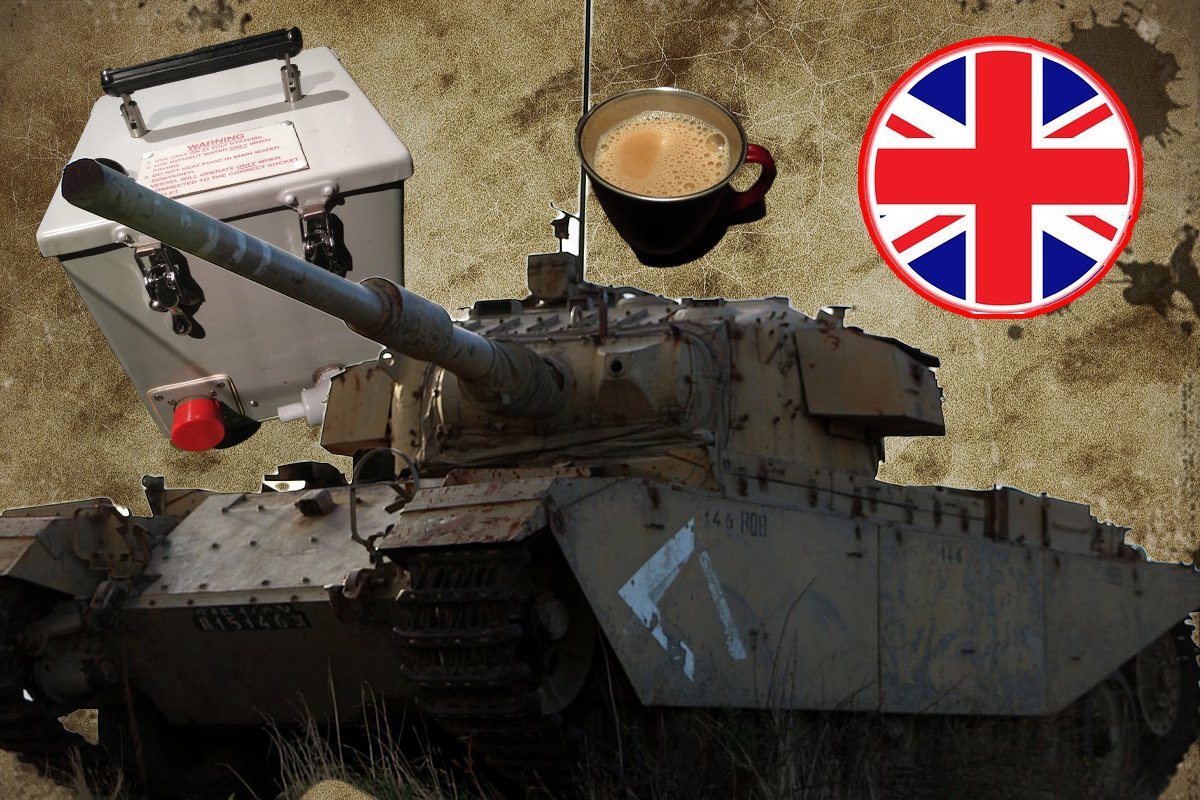
The BVs operated without the need for the main engine to be running, thanks to auxiliary generators that provided power to the BVs, as well as to radios and other minor technologies within the tank. Below the BV, a blue box stored the mugs and tea bags.
“We always used China mugs, because a cup of tea doesn’t taste the same unless it’s in a China mug,” Cutland said. “I cannot think in my 30 years of service on tanks what life would have been like without having a cup of tea.”
Read Next:

Matt Fratus is a history staff writer for Coffee or Die. He prides himself on uncovering the most fascinating tales of history by sharing them through any means of engaging storytelling. He writes for his micro-blog @LateNightHistory on Instagram, where he shares the story behind the image. He is also the host of the Late Night History podcast. When not writing about history, Matt enjoys volunteering for One More Wave and rooting for Boston sports teams.
BRCC and Bad Moon Print Press team up for an exclusive, limited-edition T-shirt design!
BRCC partners with Team Room Design for an exclusive T-shirt release!
Thirty Seconds Out has partnered with BRCC for an exclusive shirt design invoking the God of Winter.
Lucas O'Hara of Grizzly Forge has teamed up with BRCC for a badass, exclusive Shirt Club T-shirt design featuring his most popular knife and tiomahawk.
Coffee or Die sits down with one of the graphic designers behind Black Rifle Coffee's signature look and vibe.
Biden will award the Medal of Honor to a Vietnam War Army helicopter pilot who risked his life to save a reconnaissance team from almost certain death.
Ever wonder how much Jack Mandaville would f*ck sh*t up if he went back in time? The American Revolution didn't even see him coming.
A nearly 200-year-old West Point time capsule that at first appeared to yield little more than dust contains hidden treasure, the US Military Academy said.












